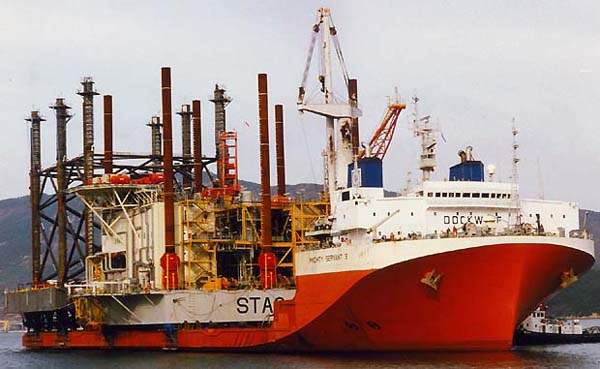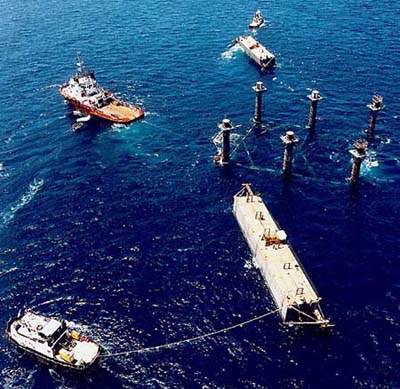Stag is located 65km off Dampier, on the North West Shelf, in 47m of water.
The reservoir consists of a low-relief, faulted, four-way disclosed structure. It has a 15.5m oil column, but no determined aquifer, as the rock underlying the oil column is impermeable. Stag crude contains little gas in solution and no overlying gas cap has been mapped.
Reserves have been estimated at 35-55 million barrels (bbl). The field initially produced 30,000bbl oil/day although production rates are expected to decline rapidly, following a sharp increase in water cut.
Development
The development was based on a fixed central production facility (CPF) to support eight wells (with the five production wells all horizontal), as well as facilities to process 50,000bbl/day of fluids, 30,000bbl/day of that being oil.
This is to be connected, by an underwater export 8in pipeline, to a pipeline end manifold (PLEM) 2km away. This line would be linked to a tanker via a catenary anchor leg mooring (CALM) buoy.
The $64 million EPIC contract for the provision of a platform was won by Bouygues Offshore, who proposed the idea of a self-installing platform, based on an integrated deck that could be commissioned onshore.
Samsung of Korea was selected as the fabrication subcontractor. Construction of the deck barge was carried out at the Koje yard. They were transported using the vessel Mighty Servant 3.
Topsides
The steel 5,000t deck is essentially that of a jack-up barge. It supports the living quarters and the production module. It is built up of a 2,000t steel hull, a 2,000t process module and a 700t living-quarter module for 50 people.
It houses facilities for a two-stage oil, gas and water separation system as well as an oil-export pumping system, for transfer to the floating storage unit for fiscal metering. It also incorporates produced water treatment for offshore disposal, as well as seawater-treatment facilities to reduce solids and oxygen pumped with the water into the injection wells.
Two first-stage separators are used and chemicals are injected into the product stream for inhibition and enhanced product separation. An electrostatic coalescer was used prior to crude export to the FSO.
Power supplied by three dual-fuel-generating sets run on either crude oil or diesel. These have a total generating capacity of approximately 4.5MW.
ESPs
Because of the insufficient gas available for gas lift, the five producing wells are installed with electrical submersible pumps.
In order for these to operate over a range of producing conditions, they incorporate variable speed controllers.
Installation
Bouygues Offshore proposed a novel system consisting of a self-installing jacket and a topside platform featuring a ‘hulled-deck’, both of which were transported from their construction site at Samsung, Korea, to the field, using a semisubmersible barge.
Drilling
Stag is developed using five horizontal production wells drilled along the crest of the field, as well as at least three water injectors along the pinchout edge. The platform design includes slots for 12 wells, some of which are currently being pre-drilled. If further side-tracks or re-drills are necessary, a jack-up drill rig can be located adjacent to the platform.
Provision has been made in the design for the tie-in of future satellite platforms of up to three production wells, with spaces available in the production manifolds.
Risers will be pre-installed. Space has also been allowed to upgrade process facilities and add more gas-lift compression.
Contracts
Bluewater won the contract to supply the CALM buoy, while the pipeline and mooring installation contract was won by SubSea International. The electrical submersible pumps were supplied by REDA.








